Lochgilphead, Argyll and Bute, Scotland, UK 作者: 来源: 发布时间:2021-07-28
I. Population and Area
Continent: Europe
Country: The U.K
State/Province: Scotland
City/Town: Lochgilphead, Argyll and Bute
Total Area: 3.2 (sq mi)
Population in 2018: 2.3(thousand)
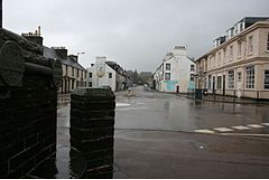
Reference Website:
https://www.google.com/search?ei=o5NkX5SgB8jb-wS8ibfgDA&q=population+of+Lochgilphead%2C+Argyll+and+Bute&oq=population+of+Lochgilphead%2C+Argyll+and+Bute&gs_lcp=CgZwc3ktYWIQAzIFCCEQoAE6BAgAEBNQhs4CWIbOAmCM0wJoAHAAeACAAfQBiAHbA5IBAzItMpgBAKABAqABAaoBB2d3cy13aXrAAQE&sclient=psy-ab&ved=0ahUKEwjU_Y7uxvLrAhXI7Z4KHbzEDcwQ4dUDCA0&uact=5
II. Natural Geography (environment and resources)
Climate
Lochgilphead has an oceanic climate. As with most of the West Highlands, there are low sunshine levels and high amounts of rainfall, with around 1,150 sunshine hours and nearly 2,000 mm (80 in) of rainfall annually. The nearest weather station to Lochgilphead is at Lephinmore, which is 8 miles (13 km) to the north-east and 9 m (30 ft) above sea level. The 2 weather stations are at Lephinmore and the other at Dunchologan-Lingerton waste disposal landfill site. During some winter/spring high tides, coinciding with stormy weather, some of the buildings along the front short line can be susceptible to some flooding. The Badden Burn and Crinan Canal are the primary sources of river flood risk in the area to the north of the town, causing around £70K of damage each year to the (approx) 20 residential and 10 business properties at risk as well as the A816 leading north out of Lochgilphead.
Railways
The main railway line in Argyll and Bute is the West Highland Line, which links Oban to Glasgow, passing through much of the eastern and northern parts of the area. From the south the line enters Argyll and Bute just to the west of Dumbarton, continuing north via Helensburgh Upper to the eastern shores of the Gare Loch and Loch Long. The line comes inland at Arrochar and Tarbet to meet the western shore of Loch Lomond. At the northern end of the loch the lines leaves Argyll and Bute to enter Stirling council area. The Oban branch of the West Highland Line re-enters the area just west of Tyndrum, and heads west to Oban: stations on this section of the line include Dalmally and Taynuilt railway station.
Roads
The main trunk roads in Argyll and Bute are:
The A82, which runs along the western shore of Loch Lomond, providing the main route between Glasgow and Fort William. The A83, which leaves the A82 at Tarbet, heading west and then south to eventually reach Campbeltown by way of Inveraray and Lochgilphead.
The A85, which leaves the A82 at Tyndrum (just outside Argyll and Bute) and heads west to Oban via Dalmally. The A828, which leaves the A85 at Connel and north through Appin to join the A82 at Ballachulish. The A815, wihich leaves the A83 in Glen Kinglas near Cairndow, heading south through Strachur and Dunoon and ends at Toward 40 miles later, on the southern tip of the Cowal peninsula. The A815 is the main road through Cowal. The A886, which leaves the A815 at Strachur, passing through Glendaruel, the route includes a ferry link to the Isle of Bute, Colintraive - Rhubodach terminating at Port Bannatyne to the north of Rothesay.
Ferry services
Due to its heavily indented coastline and many islands, ferries form an important part of the council area's transport system. The main ferry operator in Argyll & Bute is Caledonian MacBrayne (CalMac), which operates services from the mainland to most of the inhabited islands. Several other routes are operated by commercial operators, usually on contract to the council, although the Western Ferries service across the Firth of Clyde is run on a commercial basis.
Bute is served by a route across the Kyles of Bute between Rhubodach and Colintraive in Cowal, as well as a route between Rothesay to Wemyss Bay in Inverclyde. Both routes are operated by CalMac.
Coll and Tiree are each served from Oban, via a CalMac service that also provides links between the two islands, and a once-weekly link to Barra.
Gigha is served by a CalMac route from Tayinloan in Kintyre.
Islay is served by a CalMac route from Kennacraig in Kintyre. The service is timetabled to utilise either one of two ports on the island, with both Port Askaig and Port Ellen having a service to the mainland.
Feolin on Jura is linked to Port Askaig on Islay via a vehicle ferry run by ASP Ship Management on behalf of Argyll and Bute Council.There is also a passenger-only service between the island's main centre, Craighouse, and Tayvallich on the mainland that is operated by Islay Sea Safaris.
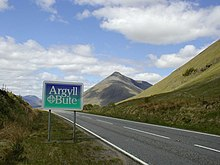
III. Economy
Earnings and Employment
·Average gross weekly pay for full-time workers in Argyll and Bute is £536.20. This compares to a Scottish average of £576.70 and a British average of £688.20 (Office for National Statistics Annual Survey of Hours and Earnings 2019, workplace analysis. Figures relate to the median earnings for employees living in the area).
·Argyll and Bute's economy is predominantly service-based. Over 83% of employee jobs in the area are provided within the service sector. (ONS Business Register and Employment Survey 2017)
·In 2018, 32.8% of employee jobs in Argyll and Bute are in ‘public administration, education and health’. This compares to 29.8% for Scotland and 26.4% for Great Britain (NOMIS 2018).
Income and Earnings
According to the Annual Survey of Hours and Earnings (ASHE) (NOMIS, April 2018), in April 2018 the average full-time worker in Argyll and Bute earned £561.50 per week (earnings by work place) (table 2).
The ASHE also records earnings according to workers’ places of residence. According to the latter, it suggests that Argyll and Bute’s full-time residents earned on average £482.40 per week, lower than the average for Scotland (table 1).
Gross weekly pay | |||
Type of worker | Argyll and | Scotland | Great |
Full-time workers | 536.20 | 576.70 | 586.50 |
Male full-time workers | 595.50 | 619.90 | 631.70 |
Female full-time workers | 471.60 | 527.00 | 528.20 |
Hourly pay | |||
Full-time workers | 13.40 | 14.80 | 14.87 |
Male full-time workers | 14.46 | 15.26 | 15.43 |
Female full-time workers | 11.51 | 14.17 | 13.98 |
Reference Website:
https://www.payscale.com/research/UK/Location=Norwich-England%3A-Norfolk/Salary
IV. Industrial Characterisitics
Major industries:
Because of the rural nature of the area, the pattern of employment in Argyll and Bute is different to the Scottish average.
The proportions of people working in the agriculture, forestry and fishing sectors and tourism-related activities are far higher than Scottish averages. Proportions of employment in tourism, hotels and restaurants are higher in the more rural areas than in the urban areas (table 1).
Industry | Argyll and Bute | Scotland |
Agriculture, forestry & fishing | 8.8% | 3.2% |
Mining, quarrying & utilities | 1.8% | 2.6% |
Manufacturing | 5.0% | 6.9% |
Construction | 5.6% | 5.5% |
Motor trades | 1.0% | 1.7% |
Wholesale | 2.2% | 2.9% |
Retail | 7.5% | 8.9% |
Transport & storage (including postal) | 5.0% | 4.2% |
Accommodation & food services | 12.5% | 7.9% |
Major projects and related introductions:
Tarbert and Lochgilphead Regeneration Fund:
As part of the Tarbert and Lochgilphead Regeneration Fund, £3 million has been allocated to promote the regeneration and economic development of the Mid Argyll area. The initial criteria for the fund were agreed by Argyll and Bute Council’s Policy and Resources Committee on 12 May 2016. The agreed criteria for assessment of projects are:
Ability to create jobs, grow the population and/or stimulate private sector activity that will deliver these results;
Extent to which they support the delivery of the Single Outcome Agreement (SOA) particularly in terms of the overall objective (Argyll and Bute’s economic success is built on a growing population) as well as long-term outcomes 1, 2 and 3 (The economy is diverse and thriving; We have infrastructure that supports sustainable growth; and education, skills and training maximises opportunities for all);
Reference Website:
https://www.argyll-bute.gov.uk/info/economy
https://www.argyll-bute.gov.uk/info/statistics/quick-facts-and-figures-about-argyll-and-bute
V. Attractions
1. Loch Crinan:
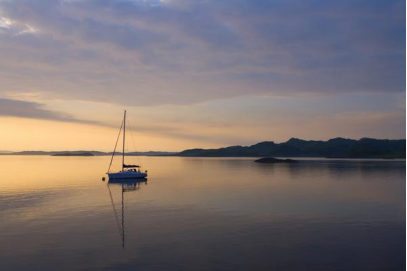
The small town of Lochgilphead is, as its name suggests, at the head of Loch Gilp, part of Loch Fyne. Although it has just over 3,000 residents, it is the Argyll and Bute administrative centre covering a huge area of western Scotland.
2. Crinan Canal:
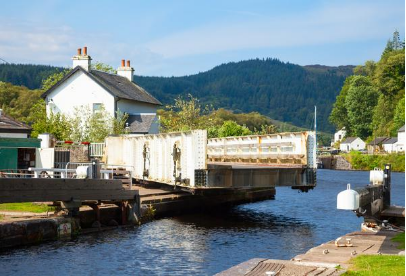
The canal was completed in 1801 and was originally used by commercial sailing ships and small steam supply boats which were called Clyde Puffers. It was built by engineer John Rennie and the lochs were later adapted by Thomas Telford.
3. Dunadd Hill Fort:
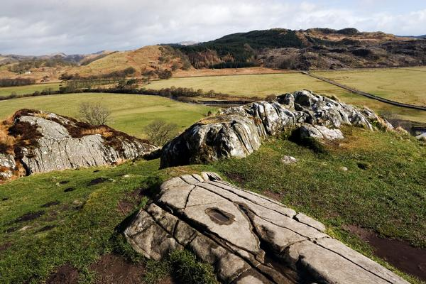
The focal point of the town is Kilmour Castle which houses the local council. In the grounds is an Iron Age hill fort and a woodland park. The town has a good selection of individual local shops, hotels, banks, a supermarket, fresh fish shop, hardware store, car dealership, garden centre and a fishing tackle shop. Other amenities include the community hospital run by local GPs, a swimming pool and sports centre.
Reference Website:
http://www.aboutbritain.com/towns/lochgilphead.asp
VI. History
As a planned settlement, Lochgilphead was created in 1790, shortly after the completion of a road from Inveraray to Campbeltown. After the completion of the Crinan Canal in 1801, the town became more important as a link across the Kintyre peninsula. The town was linked to Oban, when a road was completed in 1830. In 1831 a pier was built, helping to link Lochgilphead with Glasgow and other major towns.
In 1975 Lochgilphead was chosen as the administrative headquarters of the Argyll and Bute District Council as part of local government reorganisation, due to its central location.
In the nearby Kilmartin Glen is a large number of Neolithic remains, including cup and ring marks.
VII. Culture
In July 1982, Lochgilphead competed against teams from Perth and Oban in the then highly popular BBC Television It's a Knockout, presented by Stuart Hall. The town's team won their round and later competed in the international version of the series, 'Jeux Sans Frontieres', which was recorded in Switzerland.
Dalriada Provincial Mod
The town annually hosts the Dalriada Provincial Mod each September. The event is a Gaelic festival organised by the local branch of An Comunn Gàidhealach, which provides opportunities for people of all ages to perform across a range of competitive disciplines including Gaelic music and song, highland dancing, instrumental, drama, sport and literature.
Filmography
In the World War Two film, 633 Squadron, Lochgilphead's main street features briefly in an aerial shot, as the bombers of 633 Squadron fly over the unnamed town en route to the target in Norway. The James Bond film From Russia with Love used locations in Lochgilphead for shots. The local cinema was used to watch screen rushes each day for the cast and crew.
Mid Argyll Music Festival
The town is one of the venues for the Mid Argyll Music Festival, which runs for around 2 weeks annually.
Lochgilphead Lantern Parade And Firework Display
This annual winter event had developed into one of the major highlights in the Argyll area, attracting crowds from near and far. However, the Lantern Parade did not occur in November 2014 after the organising committee responsible for previous events announced they would not continue in May 2014.
Invention and discovery
The Argyll Turbo GT sportscar was built by Bob Henderson in Manse Brae.
Mid Argyll Show
Lochgilphead hosts The Mid-Argyll Agricultural Show, which is a major event held annually on the second Saturday in August.
VIII. Other information
·Mid Argyll Community Pool – a 20 m × 8 m (66 ft × 26 ft) social enterprise swimming pool.
·Mid Argyll Sports Centre – a sports centre with a multi use-games hall, dance studio, Squash Court, Gymnasium, CV Fitness Suite and a Resistance Room, as well as outdoor facilities, including full-size G2 floodlight football/hockey pitch, which can be subdivided into training pitches and four tennis courts, as well as two grass training pitches.
·Lochgilphead Golf Club, which has a nine-hole course, which was designed by Dr I. McCamond.
·Lochgilphead Bowling Club, bowling green and clubhouse based at Bank Park.
·Lochgilphead Library – library based at Manse Brae that has six computers for free public use, a dedicated children's area, full disabled access and also a baby-changing facility.
·Cycling – there are many cycle routes in the Lochgilphead area to cater for every level, from the Crinan Canal Towpath to the purpose-built Fire Tower Mountain Bike Trail, with a long, hard forestry climb linking on to some single track which includes berms, jumps, drop-offs and a section of north shore (raised wooden platform).
·Shinty MacCrae Park – the town's shinty pitch, and the home of Kilmory Camanachd Shinty Club.
·Putting – the Front Green is home to an 18-hole putting green, which operates seasonally.
·Fishing – there are many fishing locations around Lochgilphead which cater for sea, river and loch fishing.
·Mid Argyll Motocross Club have a track and hold events (including Scottish Championship) at Achnashelloch.
IX. Contact information
Mayor/Officer: William Gordon Blair
Tel: 07585 127187
Mail: gordon.blair@argyll-bute.gov.uk
Reference Website:
https://www.argyll-bute.gov.uk/councillor_list
